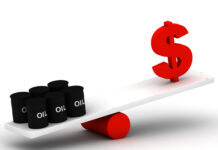
Anyone who lives and works in Louisiana is in Louisiana oil and natural gas. Someone close by, a relative or friend in any of the 64 parishes in the state, earns a living or enjoys retirement because of the opportunities offered by the industry. Decade after decade, billions in earnings for workers and taxes are produced by upstream and downstream production.
Between 2006 and 2016, Louisiana’s oil and natural gas industry paid approximately $14 billion for the opportunity to do business in the state, according to the Louisiana Department of Natural Resources. These are monies above what regular businesses in the state pay. All the while, too, tens of thousands of Louisiana businesses in oil and natural gas and hundreds of thousands of Louisianians each year pay sales, corporate franchise and income taxes.
Each year, the Louisiana oil and natural gas industry pays $2 billion in taxes and fees to the state. Each day, the oil and natural gas industry pays $3.3 million to parishes and cities in Louisiana, totaling more than $1.2 billion annually. To some, this massive investment made by the industry in Louisiana is not enough. Beginning in 2013, outside influences — specifically trial lawyers for hire and environmental activists — have led efforts to disparage the oil and natural gas industry. They say Louisiana does not need energy exploration, the jobs it creates and the taxes it pays anymore. These interests have convinced six south Louisiana parishes to run to a courtroom to single out energy exploration for fault, following decades of state-permitted exploration and production activity.
In 2016, Louisiana Governor John Bel Edwards even sent letters to parishes, informing them that if they did not file lawsuits against Louisiana’s oil and natural gas industry, then he would direct the Louisiana Department of Natural Resources to file them on the parish’s behalf — whether that parish wanted to sue the largest investor and employer in their parish or not. This has not come to pass … yet.
Today, the lawsuits filed in the six parishes are mired in various procedural steps in the courtroom. The first trial is expected to begin in March 2019 in Plaquemines Parish.
Arguably the most significant victory in this lawsuit saga, the U.S. Supreme Court finally defeated a lawsuit by a regional flood authority against 97 oil and natural gas companies. Filed in 2013, these lawsuits attempted to blame these companies for coastal issues centuries in the making. Achieving that victory meant seeing these contingency fee-based trial lawyers try to move through various courts and being defeated four times over four years.
It is becoming clearer, however, that lawsuits negatively affect Louisiana’s competitive position, especially for new projects.
As the overall marketplace grows today, applications for coastal use permits by businesses looking to invest in Louisiana dropped by a third since 2013, the year of the first lawsuit filed against the industry.
Interests moving against the industry in Louisiana want the public to ignore the industry’s more than 100-year partnership with the communities of the state. They ignore decisions made by the country, states and parishes to meet the nation’s demand for energy, to encourage the growth of communities and to prioritize the use of billions and billions of tax dollars to build roads, bridges, schools and hospitals, along with more recent projects to protect our coast.
Louisiana literally powers a nation that is truly independent when you examine the exploration and production that occurs in the state and off its shores.
Throughout history, leaders in their home parishes, in Baton Rouge and in Congress made the decision to explore for energy to meet the priorities of the time — whether it was to win World War II, fulfill the energy needs of a post-war baby boom or fuel the creation of groundbreaking products and medicines in recent decades.
The oil and natural gas industry — along with the maritime, shipbuilding, lumber and commercial fishing industries, among others — grew in Louisiana because of her vast resources, rivers and ports, and unique people.
As the industry was embraced and grew, new businesses were created and more families moved to south Louisiana. Communities expanded in New Orleans, Houma, Lafayette and Terrebonne. The state and parishes used revenues generated by energy exploration to construct new roads, schools, hospitals and neighborhoods on once vacant land.
In southwest Louisiana, Calcasieu Parish’s population alone increased five times between 1920 and 2015. Iberia, Lafourche and Vermilion parishes tripled in size, and Plaquemines and St. Mary parishes doubled during this time.
Louisiana accomplished these things with the encouragement of its leaders, and as a result of the decisions everyone made as a country, state and parish.
What’s most important is that all of these efforts to safely explore for resources occurred in a permitted environment. In 2014, the Executive Counsel of the Louisiana Department of Natural Resources told the Louisiana Legislature, “We do not have any evidence of coastal permits being violated.”
There are dozens of factors that contribute to the state of Louisiana’s coastline. Most experts agree that the Army Corps of Engineers’ leveeing of the Mississippi and other major rivers far exceeds any other reason. Throughout the years, parish governments made hundreds of decisions that had both positive and negative effects on the coast.
Misguided efforts have targeted the energy industry with lawsuits — arbitrarily declaring that oil and natural gas needs to do more and singling the industry out to pay for the coast.
These declarations by special legal and environmental interests fail to recognize that the people and businesses of Louisiana’s oil and natural gas industry bear the enormous responsibility of paying taxes as good corporate citizens and for making contributions to the coast.
Louisiana’s oil and natural gas industry is the only entity — beyond the federal government — contributing anything toward the coast of Louisiana. Currently, revenues generated by Louisiana’s oil and natural gas industry account for 58 percent of the monies earmarked for Louisiana’s Coastal Master Plan projects. As it stands now, the percentage of funds generated by the industry for the state’s Coastal Master Plan rises to above 70 percent in the coming years.
Louisiana’s oil and natural gas industry is addressing coastal issues now. ConocoPhillips is piloting a program to seed mangroves along coastal Louisiana. Apache Corporation received Louisiana’s top conservation award for donating four million trees since 2005. A partnership among the New Orleans Geological Society and three Louisiana universities is using $200 million in industry data to conduct research of seismic faults along the Louisiana coast. Other companies are partnering to create miles of oyster reefs along southeast Louisiana.
This situation questions whether the challenges of the coast are rooted in finding more funds in any way possible or whether Louisiana is prioritizing the issues of its coast appropriately as a state.
The solution to Louisiana’s coastal issues is to use the best science available, which the industry has, and invest financial resources, which the industry has contributed for decades, into projects that can ensure both a protected coast and a working coast.
The best way to preserve Louisiana’s economic and coastal future is working with the oil and natural gas industry, not against it. When you grow Louisiana’s oil and natural gas industry, you grow Louisiana.
About the author: Marc Ehrhardt has served as Executive Director since the Grow Louisiana Coalition’s inception in January 2014. He represents the Coalition in developing and executing a plan to enhance the value of Louisiana’s oil and gas industry and affiliated industries. As a public relations professional, he manages public affairs, corporate image, national media relations, issues management and crisis management programs in the economic development, financial and manufacturing industries.
ronniechua/bigstock.com














